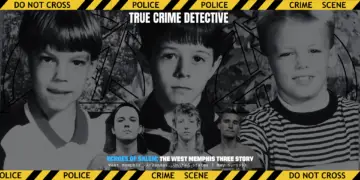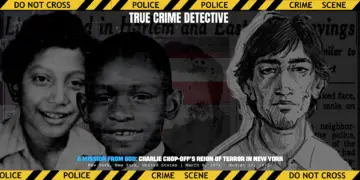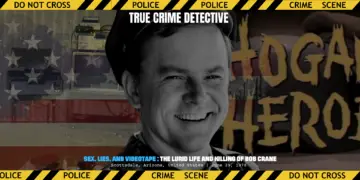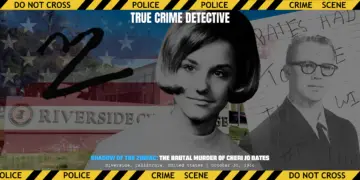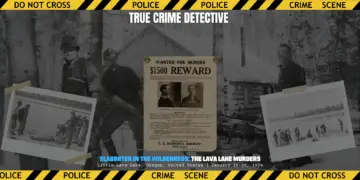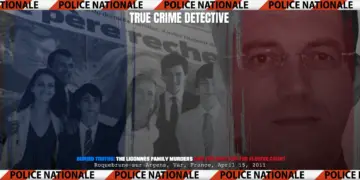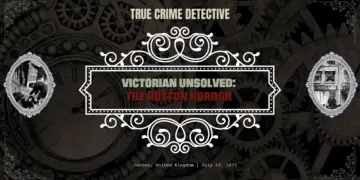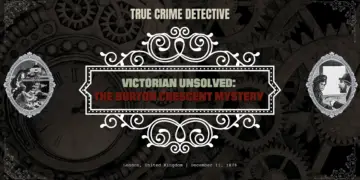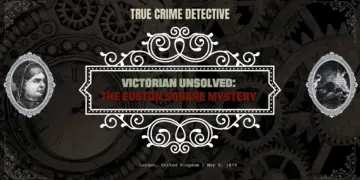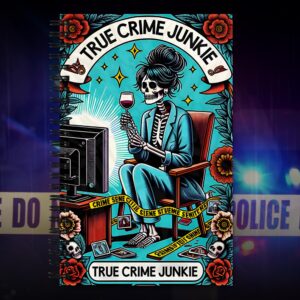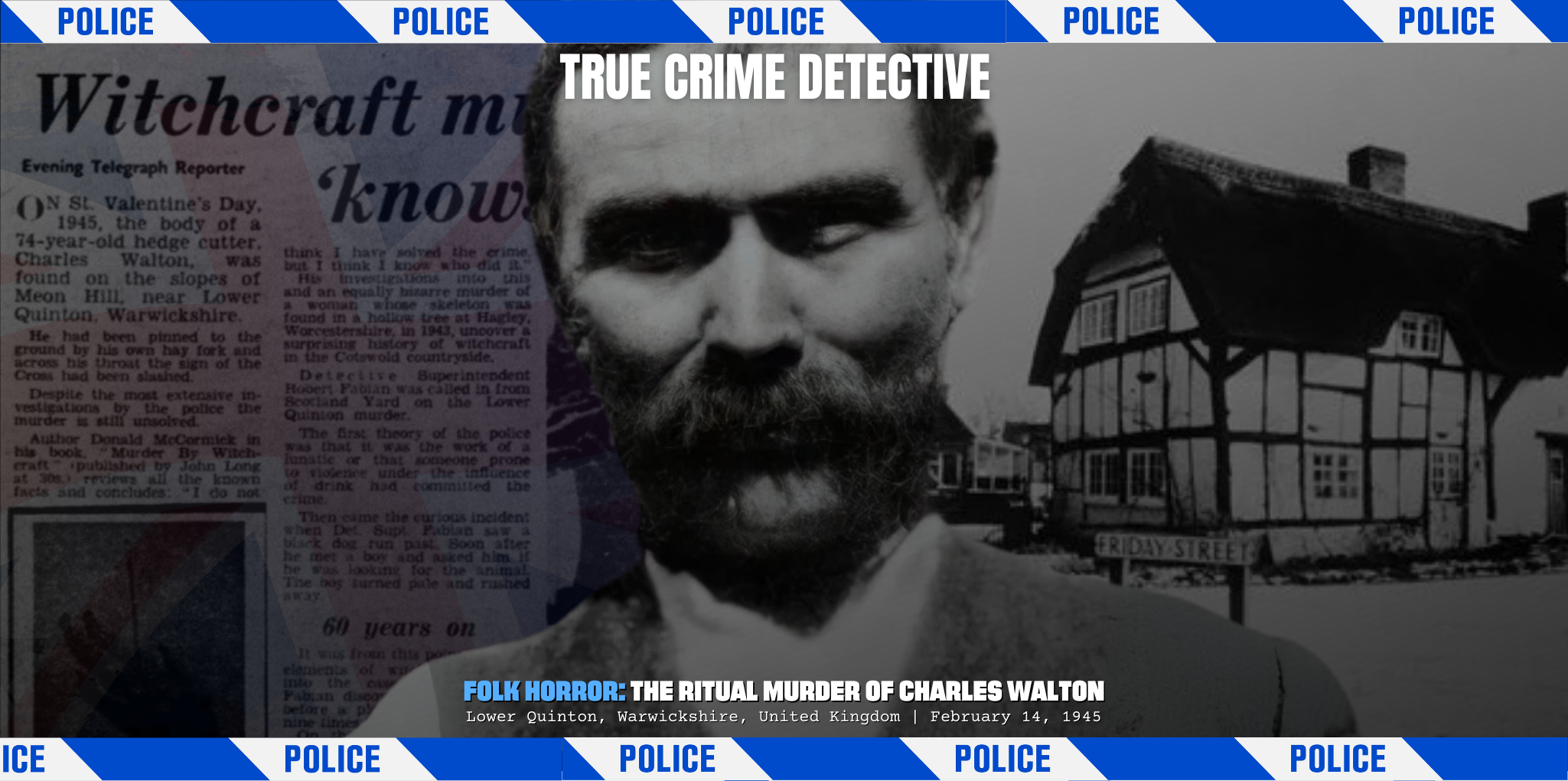
Folk Horror: The Ritual Murder of Charles Walton
In the shadow of Meon Hill, where legends of phantom hounds and ancient pagan rituals intertwine with the quiet life of an English village, a brutal murder shook Lower Quinton to its core.
For those who enjoyed Midsommar or classics such as Children of the Cornand The Wicker Man, the staples of the folk horror genre are common. The small village or community. Farms and woods. The distrustful locals. Pagan rites still existing in our modern world, covens seeking to praise the ancient evils that may still lurk in the shadows.
And, of course, murder.
Yet these tales of witchcraft often serve, on a deeper level, as a commentary on the nature of human beings themselves. The need for community and the protection it offers. The horror of isolation. The real evil of what one human might do to another. It is here at this intersection of fact and fiction and the meeting between the supernatural and very earthly annals of true crime that we come to the case of Charles Walton. A savage and bloody murder that some say was the work of such pagan rites, while the truth may lay somewhere closer to being the real root of all evil.
The Legend of Meon Hill
On Valentine’s Day 1945, Charles Walton, a farmhand, left his home in the small English village of Lower Quinton in Warwickshire. As was his routine every day, he took his pitchfork, a billhook, and a piece of fruitcake for his lunch. Walton left his wallet on this occasion and set about his work. For the past nine months, Charles had been working at The Firs farm for one Alfred Potter. He headed through the local churchyard to cut back the foliage at the Hillground on the slopes of Meon Hill. It was 9am.

The myths and legends surrounding Meon Hill go back for centuries, with the remains of an Iron Age fort still visible at the summit. One legend claims that the Satan himself kicked a boulder from the top of the hill to destroy the newly built Evesham Abbey. The locals defeated the Devil’s plan through the power of prayer, and the boulder fell on Cleeve Hill outside Cheltenham, where it was carved into a cross to rid it of the evil touch. Another version says that it wasn’t a stone at all but a giant clod of earth. The Bishop of Worcester saw the act and cast out The Evil One, the sod falling to the ground and forming Meon Hill itself. Other legends tell of phantom hounds that still haunt the nights on the hill, the myths connecting them to the celtic King Arawyn, the lord of departed spirits. Arawyn, it is said, would hunt for souls on the hill, riding a pale horse. He would be accompanied by a pack of hounds, all white but with blood-red ears.
The 74-year-old Walton had lived in the village for his entire life. He was a widower and shared his country cottage with his 33-year-old niece, Edith, whom he had adopted at the age of three after her mother’s death. She was paid a wage for the upkeep of the house. Despite walking with a stick through arthritis and now said to be struggling physically, he had remained otherwise active into his old age and still helped out at various farms in the little community. Walton was a loner but well-liked about the village, having gained a reputation as a noted horse trainer many years previously.

However, despite not being actively disliked, the locals would also speak of strange happenings surrounding him. Birds would flock to his hand, and he was said to have the ability to tame a dog by his voice alone. Warwickshire is a hotbed of folklore, and some in the village talked of old superstitions, including witchcraft and his involvement in local covens. However, the majority believed he merely had the wisdom of age and a life of rural experience. He knew of the old ways.
Headed toward the conclusion of the Second World War, many villages and towns around the country found themselves undergoing radical changes to lifestyle and structure, with Lower Quinton being no different. For example, Edith was employed as a Printer’s Assembler at the Royal Society for Arts, Manufactures and Commerce (RSA), which had relocated to the village, usually being based in the blitzed London. Edith returned home following work around 6pm and found Charles to be absent. He was expected to have returned around two hours earlier. Walton was a man of habit, solitary in his life and not taken to breaking his routine for momentary whims or to join others in pursuits of pleasure. His absence was concerning.
“He was friendly with everyone, but no one ever visited him at the house. He didn’t go out in the evenings and very seldom went into the public house. He was always happy and contented with his life.”
Edith Walton.
Edith went to call on her neighbor, another farm hand by the name of Harry Beasley. Beasley was unaware of where Charles might be but agreed to accompany Edith on a search to find him, making their way to The Firs and Alfred Potter. Likewise, Potter hadn’t heard from Charles, last remembering him to have been cutting the hedges at the Hillground, saying “I have to do the milking on a Wednesday. I came to the field to cut some hay at 12 o’clock and saw your uncle at his work.” He hadn’t seen him since. The trio made for Charles’ last known sighting and soon discovered the reason for his absence…
Charles Walton had been brutally murdered.
Murder in the Hedges
Edith was hysterical and overcome with grief for the man who was effectively her father, screaming at the bloody sight. Beasley attempted to calm her and make sure that she didn’t disturb the scene, taking her back down the hill. Potter meanwhile called out to a passer-by, Harry Peachey, telling the local to fetch the police as he stood guard at the crime scene.
Charles Walton had been the victim of a horrific attack, shocking in its violence and utilizing Walton’s own tools against him. He had been severely beaten about the head with his own walking stick before his throat was slashed three times with his billhook. Not satisfied, the assailant had stabbed Walton in the chest with his pitchfork and finished by ramming it into his face, pinning him to the ground, and locking the handle under a cross-member of the hedge. The billhook remained wedged in his throat. Future legends surrounding the case would state that a cross had been cut into the victim’s chest. However, this was not the case, and it does not feature in the future autopsy. It was also said that such was the assailant’s strength; it took two police constables to pull the fork from the ground. However, Professor James Webster of the West Midlands Forensic Laboratory would actually remove the makeshift weapon.
That autopsy would reveal that Walton had fought back against his attacker as best he could, his arms showing defensive wounds, with a cut to his left hand and bruising to the back of his right hand and forearm. The victim’s shirt had also been opened, and his trousers had been unfastened, with his fly unbuttoned. While the possibility exists that Walton may have been attacked while relieving himself, that would fail to explain why his shirt was open. While he was engaged in labor, February rarely produces hot weather in the United Kingdom. Equally, Walton’s belt laid across his legs.

First on the scene of the murder was Police Constable (PC) Michael James Lomasney, coming a little after 7pm, with detectives from the nearby market town of the Stratford-upon-Avon Criminal Investigation Department (CID) arriving later in the evening led by Detective Superintendent (DSI) Alec Spooner. Constable Lomasney would later note that Potter “seemed very upset.”
“He was shivering and complained of being cold. Looking back, I think that Potter appeared more worried than one would have expected him to be… His complaint of feeling cold I considered a strange excuse from one who was used to attending to animals at all hours and in all kinds of weather, especially as the murdered man was his own employee and had been murdered on his own land.”
PC Michael Lomasney.
Lomasney initially believed the death to be a case of suicide, perhaps showing the local constabulary’s inexperience. Upon inspecting the body, the PC noted that a watch chain was present, but missing was the watch itself. It was later described as a “gents plain white metal pocket watch, snap case at back, white enamel face, with ‘Edgar Jones, Stratford on Avon’ thereon. Second hand. English numerals. Valued at 25 shillings about ten years ago”. Worth a little over £40 ($56) in today’s money, the watch would be an unlikely prize for a thief and suspicion turned instead to a maniac or one of the Italian prisoners of war at a nearby camp.

Detective Inspector (DI) Tombs began taking statements that night, interviewing Alfred Potter first. The farmer gave the background to his hiring of Walton and his work at the Hillground, stating that he’d been working on the last field needing attention. He would add that he had been in the local pub, the College Arms, until noon. He then proceeded back to his farm and observed Charles at work. Potter observed that Walton was almost complete in his task and that it would have only taken another 30 minutes to finish to the point that the hedge now stood, placing the time of the attack at a little after noon that day, February 14.
Professor Webster was the next to arrive at the village, and the body of Charles Walton was finally removed at 1:30am. The next day, the Chief Constable decided the case required the specialist knowledge of the Metropolitan Police.
“The Chief Constable has asked me to get the assistance of Scotland Yard to assist in a brutal case of murder that took place yesterday. The deceased is a man named Charles Walton, age 75, and he was killed with an instrument known as a slash hook. The murder was either committed by a madman or one of the Italian prisoners who are in a camp nearby. The assistance of an Italian interpreter would be necessary, I think. Dr. Webster states deceased was killed between 1 and 2 pm yesterday. A metal watch is missing from the body. It is being circulated.”
Deputy Chief Constable to Scotland Yard.
Enter Fabian of the Yard

After his retirement in 1949, five years on from events in Lower Quinton, the colorful Robert Fabian would become a celebrity through his interestingly embellished tales of his time as a police officer. The BBC would adapt his 1950 autobiography, Fabian of the Yard, into a popular police procedural in 1954, with each episode introduced by Fabian himself. Eventually ending his career as Detective Superintendent, Fabian is Chief Inspector when he arrives in the village. His account of the Charles Walton case published in The Anatomy of Crime would be sensationalist at best.
“I advise anybody who is tempted at any time to venture into Black Magic, witchcraft, Shamanism — call it what you will — to remember Charles Walton and to think of his death, which was clearly the ghastly climax of a pagan rite. There is no stronger argument for keeping as far away as possible from the villains with their swords, incense, and mumbo-jumbo. It is prudence on which your future peace of mind and even your life could depend.”
Robert Fabian, The Anatomy of Crime.
Fabian arrived in the village on February 16 and was accompanied by Detective Sergeant (DS) Albert Webb. The duo immediately took command of the case, and later that same day, an Italian-speaking Detective Sergeant arrived by the name of Saunders. Saunders was immediately tasked with making inquiries at the local POW camp, with Saunders finding that the prisoners were allowed to generally roam freely around the local area. While it might seem unusual to modern sensibilities, it wasn’t an uncommon practice at the time, particularly regarding Italian prisoners. On the day of the killing, some of the POWs had visited Stratford to watch a play. Others had seen a film at the cinema there.

While prone to the future embellishment of this case and others, Fabian’s investigation was thorough and professional. He set up his HQ in Stratford-upon-Avon and utilized a giant map of the area to track the stated movements of all those involved in the affair. Aerial photos taken by the RAF were used and, when an Italian was arrested hiding in a ditch with blood on his hands, he professionally dealt with the suspect. While others might have been prone to write off the case quickly or proclaim the killing to be the work of wartime enemies, Fabian quickly dismissed the man as merely a poacher.
While there was no record of their movements, police never took the theory that an Italian was responsible seriously. Instead, the eyes of Fabian and Webb were drawn to Alfred Potter.
Potter was interviewed a second time and began to divulge new information that may have shed light on the case, including an indication that he believed Walton may have been swindling him. The farmer had left it to Charles’s honesty about how many hours he had actually worked, meaning that he may have been paying him for work not done. Alfred reiterated that he left the village pub at noon and, around 12:20pm, had seen Walton while he was on his way back to his farm. Potter said he didn’t greet Walton as he had a heifer that required his attention.
Suspicion of Potter increased when he was informed by PC Lomasney that the police were hoping to find fingerprints on the billhook. Potter suddenly remembered that he had touched the instrument’s handle after being told to ensure that Walton was truly deceased by Harry Beasley. Potter’s wife was immediately irate, claiming that police would surely now suspect her husband. The new suspect also seemed particularly keen to suggest it was one of the Italian prisoners, insisting to Lomasney that it was “the work of a fascist from the camp.” However, given the village’s insular nature and the still ongoing war, it might not be unusual to believe the nearby enemy was responsible.
Yet, Potter seems overtly keen to ensure his alibi was watertight, informing Fabian that he had read the newspaper for just five minutes before getting on with work after he had returned home. His worker, Charles Henry “Happy” Batchelor, was happy to confirm that he had joined Alfred pulping some mangolds before they headed to look at the church clock, by which they knew it was exactly 1pm. Lillian Potter, likewise, confirmed the account, noting that her husband had inquired about lunch after reading his newspaper and, hearing it wouldn’t be long, joined Batchelor for the pulping.
However, the account of Potter only seeing Walton on his way back from the pub before pulping mangolds contradicted his earlier claims. As you may remember, he had told Walton’s niece Edith before the discovery of the body that he “came to the field to cut some hay at 12 o’clock and saw your uncle at his work”. It also contradicted his initial statement about the heifer. There were now three stories regarding Potter’s whereabouts at the time of the murder, even if one alibi was supported by his wife and laborer.

Further evidence would begin to stack against Potter and his alibis, the heifer that he claimed to have left to attend being found to have instead drowned in Doomsday Ditch the day before the killing. The carcass was only removed from the farm on February 14, the removal taking place at 3:30pm, hours after Walton had been slain and that Walton had claimed he’d gone to attend to the matter.
Harry Beasley would also contradict the account of Potter, saying that he was sure that Potter can only have concluded that Walton was dead immediately given the state of the corpse. He said that he had never told him to check for life. Beasley was adamant that Potter had not touched the murder weapon in his presence. Interestingly, despite Potter admitting he’d had his hands on the billhook, no fingerprints were eventually found. Despite this, Beasley would praise Potter as a decent boss. Others, however, noted that he had occasional difficulties paying the wages of his farmhands.
In fact, money seemed to be an overwhelming presence in the case, with Charles Walton’s finances being somewhat curious. When Walton’s wife died in 1927, she left him a sum of £297, over £12,000 in modern money. He placed the money in a building society, yet when police investigated, they found he only had £2 to his name despite working his whole life and being noted for his frugality. The money was never accounted for.
After Potter raised the subject that Walton may have been working fewer hours than he was actually paying him, Fabian made sure to check the books. He concluded that what Potter was really doing was covering his back, for he’d been indenting more wages to L. L. Potter & Co. than he was actually paying Walton. Potter was embezzling the difference for his own wallet.
“Potter is undoubtedly lying about his actions at this critical time, but the reason for these lies can, for the present, only be a matter for conjecture.”
Robert Fabian, Metropolitan Police File.
Investigations spread throughout the village. While Fabian would later claim he had been met with “a wall of silence” as he played up stereotypes of the folk dislike of strangers, the truth is that the locals were mostly cooperative but had little to tell.
“There were lowered eyes, reluctance to speak except to talk of bad crops — a heifer that died in the ditch. But what had they to do with Charles Walton? Nobody would say….Cottage doors were shut in our faces, and even the most innocent witnesses seemed unable to meet our eyes. Some became ill after we spoke to them.”
Robert Fabian’s “colorful” account in his 1950 book
Around 500 of Lower Quinton’s residents were interviewed over the murder, including children. 4000 statements were taken, and samples of hair and clothing from the crime scene were sent away for analysis. The area was extensively searched, and even the military became involved, an RAF aircraft surveying the fields to take the photography as mentioned earlier. Mine detectors from the Corp of Royal Engineers were also utilized to find Walton’s missing watch, which Fabian believed may hold the killer’s fingerprints.
The investigation was being taken seriously and professionally, having caused something of a sensation in the press. It was during these subsequent investigations that the claims of witchcraft and the supernatural would first emerge.
The Witches of Shakespeare Land
DSI Spooner’s investigations had led him down the path of local legend and his views would be soon be colored by the discovery of a book, Folklore, Old Customs and Superstitions in Shakespeare Land by J. Harvey Bloom. The book featured a passage which had been underlined, stating that in 1875 “a weak-minded young man killed a woman named Ann Tennant with a hayfork because he believed she had bewitched him.” A second book, Warwickshireby Clive Holland, told more details of the case.

Ann Tennant was from the nearby Long Campton and was murdered on September 15, 1875, at the age of 80, after she’d left her home to buy a loaf of bread. Meeting some local farmhands on her way back, the old woman was set upon without warning by James Heywood. Heywood attacked Tennant with a pitchfork, stabbing her in the legs and head. Despite claims, she hadn’t been pinned to the ground like with Walton.
Heywood had been familiar with the Tennant family for many years and was described as “simple-minded,” he had been drinking cider and committed the murder in full view of two witnesses.
The case was seemingly a combination of alcohol and potential mental illness, with Heywood claiming that Tennant had been a witch and part of a local coven after his arrest. At his trial, Heywood claimed he had been acting in defense of the village, with Tennant having “bewitched the cattle and land of local farmers.”
“If you had known the number of people who lie in our churchyard, who, if it had not been for [witches] would have been alive now, you would be surprised. Her was a proper witch.”
James Heywood.
He was found not guilty through insanity and spent the rest of his life at Broadmoor psychiatric hospital for the criminally insane. He died in 1890. The killing method was described by Holland and Warwickshire as “sticking” or staking, the ancient Anglo-Saxon way of killing witches to ensure that they didn’t rise from the grave.
The tale is one of many from the area, with the Cotswolds in the West Midlands being one of the centers of British pagan folklore. It is here that we find the ancient megalithic Rollright Stones, Long Compton itself being known as “the witch village.”

There were those at Lower Quinton who wondered allowed if the coven of witches that were believed to exist in Long Compton might, in fact, be at work in the slaying of Charles Walton. Some said they were the most ancient coven still surviving in Britain and consisted of three men and four women, a magical seven. This coven allegedly met on Meon Hill, and the author Donald McCormick said that “the influence of witches comes and goes like the full moon” at both Long Compton and Lower Quinton. Yet, McCormick also alleged that Walton had been introduced to witchcraft by a servant girl who had bewitched cattle by roasting a cow’s heart on a fire. Like Fabian, he had an eye for a good story without being necessarily beholden to truth. His books sold very well and, again, only added more myth to the truth behind the murder of Charles Walton.

However, those myths only intensified when it became known that Walton had been distantly related to Ann Tennant, our Long Compton murder victim.
There is a dispute over how close that connection actually was, with one account saying that the relationship was so distant as to hardly have been unusual in rural Warwickshire. Walton’s first cousin, once removed, was John Haynes. Haynes was married to Sarah Cook, whose own first cousin, once removed, was Elizabeth Clifton, Ann Tennant’s son’s wife. Some believed, however, that the connection was much closer and that Ann Tennant had, in fact, been Charles Walton’s great-grandmother.
The Ann Tennant connection, no matter how slim, was only compounded by what DSI Spooner also found in Folklore, Old Customs, and Superstitions in Shakespeare Land. Later on in the book, after the underlined passage about Ann, was another marked page. This page told the tale of how in 1885, a boy had encountered a black dog on nine successive days. On the last occasion, the dog was in the company of a headless woman. That same night, the boy’s sister died. Local folklore had long reported black phantom dogs roaming the area, being a harbinger of death. The boy’s name was Charles Walton.
However, while the name is a peculiar coincidence, it was unlikely to have been the same Charles Walton as the victim, with no evidence found that he had a deceased sister, nor that the timeline would have fit. Humans rarely like coincidences, however. Instead, they construct narratives to explain away what is mere chance, placing their faith in myths rather than accepting that randomness and human failings are the actual cause of most of what we perceive to be inexplicable.
Becoming Myth and Legend
Eventually, DI Fabian and DS Webb would return to London, leaving DSI Spooner to continue investigations in the village as the trail went cold. The duo would make one last trip back to the Lower Quinton before the end of the case, interviewing Alfred Potter after a police constable, John West, reported that on the morning of February 15, Potter had approached the crime scene soon after first light. The subsequent interview revealed little new information except for the fact that Charles “Happy” Batchelor, who had helped in his alibi, had since left Potter’s employ alongside another farmhand.
According to Fabian, before he left, he took one last trip to the crime scene and Meon Hill. Describing the hill as “a bleak and lonely place,” he encountered a black dog on the path. Spotting a boy running down the same way, Fabian tells of how he asked whether the boy had lost his dog. When told it was a black hound, the boy ran as fast as he could in the opposite direction. Later that same day, a black dog was found hanging from a tree at the site of Charles Walton’s murder. Like much of Fabian’s account, it should be taken with a pinch of salt, mainly because his reports to Scotland Yard make no mention of witchcraft, black dogs, pagan rites, or any other such occurrences.
Despite the circumstantial evidence weighted against Potter, there was no physical evidence linking him to the crime, nor any witnesses. A pair of trousers that Potter had worn on the day of the murder was believed to contain bloodstains by Professor Webster, but they had been cleaned enough to make any analysis impossible. There was no evidence that Potter was capable of such violence, nor that there was a quarrel between the two men. The case was cold.
“[There’s] no real evidence to connect him with the murder itself, and no reasonable motive can be found for his committing it.”
Robert Fabian, Metropolitan Police File
The matter became something of a personal obsession for Spooner long after the world had lost interest and the files had begun to gather dust in a Scotland Yard filing cabinet. He became a familiar face about the village, often arriving unexpectedly to spook the killer. Spooner was convinced by the ritualistic angle, believing that the answer lay in Lower Quinton and that a local man must have been responsible. The DSI would return every year to climb Meon Hill and walk around the village, hoping to spot some overlooked clues missed during the initial investigation. He even returned after his retirement.

In 1960, a new lead would come to light that, if anything, only deepened the mystery. During demolition behind Charles Walton’s cottage, a workman discovered his missing watch in an outhouse. The outhouse was searched at the time of the investigation, meaning that whoever took it must have returned it to his home. Again, local legend tells of how Walton would keep a piece of “witch’s glass” in the watch’s case, using it to deflect evil.
Like the devil legends, the black dogs, and roaming demon kings, the case of Charles Walton itself has now been added to myths and legend that surrounded the case upon its investigation. Truths have become distorted. To some, Walton was a warlock who practiced his dark arts and cast fear over the village, keeping natterjack toads as familiars and blighting the crops. These claims suggest that a failed harvest in 1944 and the death of Potter’s heifer were too much for the village who decided to enact the ancient rite of blood sacrifice, letting the witch’s blood replenish and cleanse the soil.

Another claim, made famous by the Egyptologist Dr. Margaret Murray, the President of the Folklore Society from 1953 to 1955, was that Walton had been sacrificed as part of a fertility ritual by those still practicing pre-Christian paganism. While Murray’s work in Egyptology and archaeology was widely acclaimed, her theories and writings on witchcraft have primarily been rejected and debunked.
These sensationalist tales were eaten up by the tabloid press with the lurid claims of still existing pagan rituals in England’s green and pleasant land, attracting all manner of the disturbed and the eccentric. One such woman claimed that the killing had been a sacrifice carried out by well-known occultists from London and Birmingham.
These tales, in no way helped by the sensationalism of Fabian, were only embellished yet further with the growing popularity of folk horror and stories of the “weird countryside,” backed by an air of urban superiority over the “simple folk” that they perceived rural areas to be populated by. While undoubtedly the people of Lower Quinton were prone to gossip and the “old wives tales” of perceived wisdom that always spread in the country, this is a long moral distance from ritualistic pagan slaughter involving an entire community.
Lower Quinton was a village of over a thousand people at the time; it temporarily housing the Royal Society of Arts and the RAF’s nearby Long Marston Airfield. Stratford is just 6 miles away. It was far from the isolated pagan village it has been made out to be.

Investigators and the media often comment on how locals were reluctant to talk about the murder over the coming years. Yet, who can blame them, given their portrayal by Fabian? Following the sensation, the village began to be “pestered by occultists, psychic researchers, writers, the morbidly curious and others.” Mediums would visit every Valentine’s Day when all the locals wanted was to “live out their lives quietly in one of the most attractive corners of the county.”
The truth of the murder of Charles Walton is likely far closer to the initial suspicions of Fabian and Webb. That being that Potter’s alibi was unsafe, and he was the only possible suspect, the farmer being the culprit after the two had argued about money. When you erase the superstition and claims of witchcraft that have always clouded the tale, all that remains is the corpse, the claims about money, and Alfred Potter.
While many are keen to lay the blame for the extreme violence done to the defenseless Charles Walton at the door of the Devil, the truth is that we need no help from such dark forces to deal out real evil. This evil exists not in pagan rites and the superstitions of yore, but rather it resides in many human beings, its root too often being the pursuit of money. For Charles Walton, that evil made itself known in a minute of extreme violence dealt out to him at noon on one cold Valentine’s Day. For many more years to come, that evil continued to walk free amongst the sleepy cottages of Lower Quinton.
